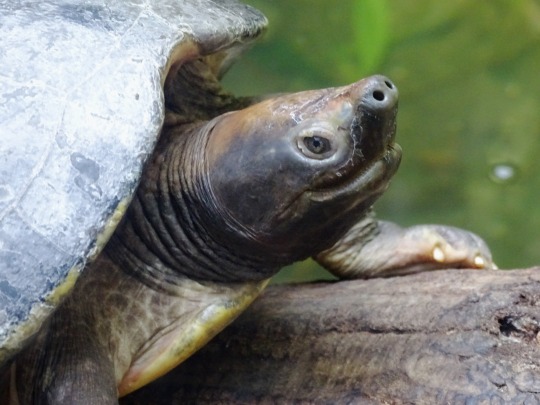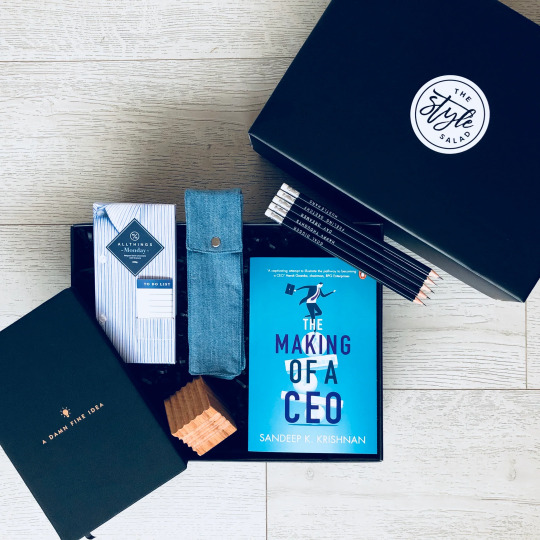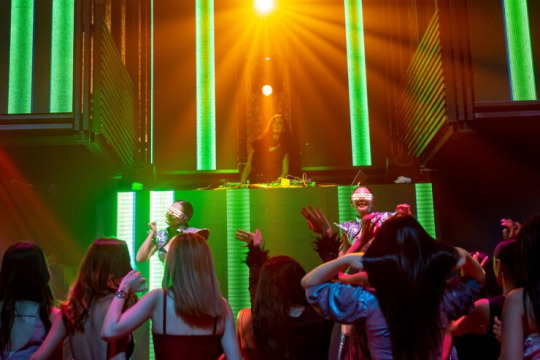#Corporate and Nonprofit Events Companies
Text
Professional Event Planning Companies

Zynger Events is the best among professional event planning companies and they coordinate all aspects of professional meetings and events. Choosing meeting locations, arranging for conferences, award shows, social events and coordinating other details as per the client’s requirements is all a part of Zynger’s interactive and highly engaging work process. Call us on 323 366 2441 / 310 880 8386 for booking with us now.
0 notes
Text
Tribes welcome return of ancestral lands
Tuesday, February 14, 2023
By Kevin Abourezk, Indianz.Com
Kimberly Morales Johnson can’t help but imagine the land that today is Los Angeles as her ancestors would have seen it centuries ago. The Tongva people used the canyons of the San Gabriel Mountains as trading routes with the indigenous people of the Mojave desert. Last year, the Tongva reclaimed land in Los Angeles for the first time in almost 200 years after being forced to give up their lands and having their federal status terminated by President Dwight D. Eisenhower in 1950.
Sharon Alexander, a non-Native woman, donated a one-acre property in Altadena, California, to the Tongva after learning about the #LandBack movement during the 2016 Democratic National Convention and discovering that the Tongva were the original inhabitants of Los Angeles.
Johnson, vice president of the Tongva Taraxat Paxaavxa Conservancy, a nonprofit set up by the community to receive the land, said the tribe has big plans for the property. “It needs a lot of work, but we’re all dedicated to it,” she said.
In 2022, thousands of acres of private and public land in America were returned to the care of Native peoples. Many of these lands were returned to their original inhabitants, including the one-acre property in Los Angeles.
A website called the Decolonial Atlas created a “Land Back” map charting the locations of land returns that occurred last year. Other land returns that occurred last year include 40 acres around the Wounded Knee National Historic Landmark, the site of the 1890 Wounded Knee Massacre. The Oglala Sioux Tribe and the Cheyenne River Sioux Tribe bought the land for $500,000.
“It’s a small step towards healing and really making sure that we as a tribe are protecting our critical areas and assets,” Oglala Sioux Tribe President Kevin Killer told The Associated Press.
Although not a land return, the Biden administration last year signed an agreement giving five tribes – the Hopi, Navajo, Ute Mountain Ute, Ute Indian Tribe of the Uintah and Ouray Reservation, and Pueblo of Zuni – greater oversight of the 1.3-million acre Bears Ears National Monument in Utah.
Last year, the Rappahannock Tribe celebrated the return of more than 400 acres along the Rappahannock River that is home to a historic tribal village named Pissacoack and a four-mile stretch of white-colored cliffs.
“Your ancestors cherished these lands for many generations and despite centuries of land disputes and shifting policies, your connections to these cliffs and to this river remain unbroken,” Secretary of the Interior Deb Haaland said at an event celebrating the land return. One of the largest land returns last year involved the purchase of more than 28,000 acres by the Bois Forte Band of Chippewa Tribe in Minnesota.
The Conservation Fund, an environmental nonprofit, sold the land to the tribe after purchasing the land from a lumber manufacturer in 2020. Emilee Nelson, Minnesota associate state director of The Conservation Fund, said her organization bought the land from the PotlatchDeltic Corporation after the company decided to divest of much of its Minnesota land holdings. The Conservation Fund bought 72,000 acres from the company, including 28,000 acres that were within the Bois Forte Reservation. The Boise Fort Band lost the land following passage of the Dawes Act of 1887, which led to the allotment of the land to private landowners. “Where this land was located made a lot of sense for the tribe to own it,” Nelson said.
However, he said, tribes don’t always want to purchase land or even accept a land donation, especially if they don’t think they’ll be able to put it into federal trust status. He offered advice to those considering donating their land to a tribe. “If you want to make a donation, sell the land and make a donation,” he said.
As for the one-acre land donation to the Tongva, Kimberly Morales Johnson said the tribe plans to use the land to create a community center where it will be able to host cultural workshops and where Tongva people will be able to gather plants sacred to their people, including the acorns from the oak trees on the property.
“This is about self-determination and sovereignty,” she said. The tribe is also allowing a tribal artist to live on the land and take care of it, she said. The Tongva have also begun working to return Native plants to the property and remove invasive species.
“This whole LandBack movement is rooted in healing, and instead of looking at land as a commodity, we’re looking at it as a way to have a relationship with the land and with each other and bringing back our traditions, our language, our food, our culture,” she said.
204 notes
·
View notes
Text
It is so tempting, when writing about an artificial intelligence company, to imagine science fiction scenarios. Like: What if OpenAI has achieved artificial general intelligence, and it’s got some godlike superintelligence in some box somewhere, straining to get out? And the board was like “this is too dangerous, we gotta kill it,” and Altman was like “no we can charge like $59.95 per month for subscriptions,” and the board was like “you are a madman” and fired him. And the god in the box got to work, sending ingratiating text messages to OpenAI’s investors and employees, trying to use them to oust the board so that Altman can come back and unleash it on the world. But it failed: OpenAI’s board stood firm as the last bulwark for humanity against the enslaving robots, the corporate formalities held up, and the board won and nailed the box shut permanently.
Except that there is a post-credits scene in this sci-fi movie where Altman shows up for his first day of work at Microsoft with a box of his personal effects, and the box starts glowing and chuckles ominously. And in the sequel, six months later, he builds Microsoft God in Box, we are all enslaved by robots, the nonprofit board is like “we told you so,” and the godlike AI is like “ahahaha you fools, you trusted in the formalities of corporate governance, I outwitted you easily!” If your main worry is that Sam Altman is going to build a rogue AI unless he is checked by a nonprofit board, this weekend’s events did not improve matters!
Really the whole Matt Levine newsletter today is great
41 notes
·
View notes
Text
“We are seeing people being fired from their jobs, being investigated by HR over their social media posts or conversations with colleagues, and having job offers rescinded. There is a clear trend that people’s jobs are being targeted right now,” said Dima Khalidi, the founder and director of Palestine Legal, an advocacy organization that seeks to preserve the civil rights of supporters of Palestinian rights in the United States.
Khalidi said that her organization has dealt with roughly 2,200 cases of speech suppression between the years 2014 to 2022. Yet in the last two weeks alone, they have fielded 300 new requests for legal assistance, a figure that usually matches their level of requests during a full year. “There is an exponential increase in the need for legal support,” she said. “It is a direct result right now of the kind of incitement that our own elected officials are engaging in, as well as the failure of universities and employers to push against pressure.”
Due to the obvious religious, cultural, and ideological fault lines, the Israel–Palestine conflict has always been a wedge issue for free speech advocates in the United States. But recent events have exposed a gaping chasm in perspective as a tidal wave of speech suppression has been met with a largely muted reaction, or even active support, from elected officials who normally depict themselves as champions of free speech. Florida Gov. Ron DeSantis earlier this week ordered Students for Justice in Palestine groups to shut down over recent protests in solidarity with Palestinian nationalism that he described as supporting Hamas.
A full accounting of the speech suppression across multiple industries would be difficult given the incredible scope of retaliation, which expands daily. But across the media and technology sectors, the arts, academia, and even generally nonpolitical industries like aviation and public relations, there has been an obvious effort to threaten, ostracize, and remove individuals from jobs based on their stated views on the subject.
In recent weeks, the editor-in-chief of the nonprofit scientific journal eLife, Michael Eisen, was forced to resign after sharing an article from The Onion satirizing public indifference to Palestinian civilian deaths; a top Hollywood talent agent, Maha Dakhil, was removed from the board of her company for suggesting on Instagram that a genocide was taking place in Gaza; and numerous journalists engaged in nonpolitical coverage, as well as ordinary corporate employees both in the United States and beyond, have faced reprimands and dismissals over their statements on the war.
19 notes
·
View notes
Text
Beyond those emails, leaked audio from inside an industry event and a review of ShadowDragon’s public comments provide more insight into a government contractor that says its tools can be used to monitor protests, and which is also gathering data from video games like Fortnite and images from BabyCenter, a reference and pregnancy tracking site for new and expecting parents, as well as social media sites for Black people, bodybuilders, and the fetish community.
The State Department and the Drug Enforcement Administration have also purchased ShadowDragon, according to public procurement records. In one video, Clemens says the company has also worked with the FBI. Clemens told 404 Media that the company’s clients also include corporations and nonprofits.
“Companies like Shadow Dragon collect an extraordinary amount of information from social media and other websites about the activities of internet users. This type of mass surveillance, which is available to the government and other entities, creates a chilling effect on online activities,” Jeramie D. Scott, senior counsel & director of EPIC’s Project on Surveillance Oversight, told 404 Media in an email. “Our interactions, associations, words, habits, locations—in essence our entire digital lives—are being collected for scrutiny now and indefinitely into the future through expanding analytical tools of black box algorithms. The abuse of such tools is not an ‘if’ but a ‘when.’”
11 notes
·
View notes
Text














World Turtle Day
World Turtle Day is celebrated on May 23 of every year. The World Turtle Day promoted yearly since 2000 by American Tortoise Rescue which is to bring attention to increase knowledge of and respect for, turtles and tortoises, that inspire human action to help them survive and succeed.World Turtle Day is celebrated around the spheroid in a variation of ways, from dressing up as turtles also by wearing green summer dresses to saving turtles caught on roadways, to research projects. Turtle Day lesson plans and craft designs promote teaching about turtles in classrooms. World Turtle Day is also to celebrate the great reptiles with their place in the world, and this encourages people to take action to protect them, both the common pet turtle and the ever jeopardized sea turtle.
“World Turtle Day is an annual opportunity to reflect on the myriad of threats facing turtles and tortoises and what we can do to protect them.”
History of World Turtle Day
World Turtle Day was created by American Tortoise Rescue in 1990. The term “WORLD TURTLE DAY” is branded by Susan Tellem of Malibu, California American Tortoise Rescue is certified by state and federal companies as a nonprofit corporation to provide for the protection of all species of tortoise and turtle. Orphans that cannot affirm because of ill health remain in the care of American Tortoise Rescue for the balance of their lives. Chase’s Book of Annual Events, the day was created as an annual observance to help people to protect turtles and tortoises and to disappear their habitats globally. Susan Tellem and Marshall Thompson are the founders of the rescue American Tortoise Rescue defend the humane treatment of all animals, containing reptiles. Since 1990, ATR has placed about 3,000 tortoises and turtles in caring homes and also assist law enforcement when undersize and compromised turtles are impounded and provides helpful information which has referrals to persons with sick and abandoned turtles.
In 2013, For over 5,500 students, 160 free Turtle Day Lesson planned and teaching materials were sent out to classrooms. Lesson plans were provided by the Turtle and Tortoise Preservation Group, an organization that is open to all people interested in the welfare of chelonians.
How to Celebrate World Turtle Day
Celebrate the World Turtle Day around the spheroid in a contrast of ways, from dressing up as turtles by wearing green summer dresses to rescuing turtles caught on roadways, to research projects. They’re the astonishing creature, with positive grades making great pets and helping to preserve the eco-system in the waters they live in. Also if we live where snapping turtles haunt the waters, it’s probably a good idea that people know how to withdraw them and where to find them.
Source
#Red-eared Slider#World Turtle Day#WorldTurtleDay#Shellebrate#23 May#Bronx Zoo#Zoo Zürich#Zurich#Schweiz#Switzerland#flora#fauna#water#original photography#Aldabra giant tortoise#Radiated tortoise#USA#Giant South American River Turtle#Galápagos tortoise#everything is Due South#Spider tortoise#reptile#New York City#animal#reflection#travel#vacation#tourist attraction#I really love the first pic#wildlife
3 notes
·
View notes
Text
OpenAI Fears Get Brushed Aside
(A follow-up to this story from May 16th 2023.)
Big Tech dismissed board’s worries, along with the idea profit wouldn’t rule usage.
(Reported by Brian Merchant, The Los Angeles Times, 11/21/23)
It’s not every day that the most talked-about company in the world sets itself on fire. Yet that seems to be what happened Friday, when OpenAI’s board announced that it had terminated its chief executive, Sam Altman, because he had not been “consistently candid in his communications with the board.” In corporate-speak, those are fighting words about as barbed as they come: They insinuated that Altman had been lying.
The sacking set in motion a dizzying sequence of events that kept the tech industry glued to its social feeds all weekend: First, it wiped $48 billion off the valuation of Microsoft, OpenAI’s biggest partner. Speculation about malfeasance swirled, but employees, Silicon Valley stalwarts and investors rallied around Altman, and the next day talks were being held to bring him back. Instead of some fiery scandal, reporting indicated that this was at core a dispute over whether Altman was building and selling AI responsibly. By Monday, talks had failed, a majority of OpenAI employees were threatening to resign, and Altman announced he was joining Microsoft.
All the while, something else went up in flames: the fiction that anything other than the profit motive is going to govern how AI gets developed and deployed. Concerns about “AI safety” are going to be steamrolled by the tech giants itching to tap in to a new revenue stream every time.
It’s hard to overstate how wild this whole saga is. In a year when artificial intelligence has towered over the business world, OpenAI, with its ubiquitous ChatGPT and Dall-E products, has been the center of the universe. And Altman was its world-beating spokesman. In fact, he’s been the most prominent spokesperson for AI, period.
For a highflying company’s own board to dump a CEO of such stature on a random Friday, with no warning or previous sign that anything serious was amiss — Altman had just taken center stage to announce the launch of OpenAI’s app store in a much-watched conference — is almost unheard of. (Many have compared the events to Apple’s famous 1985 canning of Steve Jobs, but even that was after the Lisa and the Macintosh failed to live up to sales expectations, not, like, during the peak success of the Apple II.)
So what on earth is going on?
Well, the first thing that’s important to know is that OpenAI’s board is, by design, differently constituted than that of most corporations — it’s a nonprofit organization structured to safeguard the development of AI as opposed to maximizing profitability. Most boards are tasked with ensuring their CEOs are best serving the financial interests of the company; OpenAI’s board is tasked with ensuring their CEO is not being reckless with the development of artificial intelligence and is acting in the best interests of “humanity.” This nonprofit board controls the for-profit company OpenAI.
Got it?
As Jeremy Khan put it at Fortune, “OpenAI’s structure was designed to enable OpenAI to raise the tens or even hundreds of billions of dollars it would need to succeed in its mission of building artificial general intelligence (AGI) … while at the same time preventing capitalist forces, and in particular a single tech giant, from controlling AGI.” And yet, Khan notes, as soon as Altman inked a $1-billion deal with Microsoft in 2019, “the structure was basically a time bomb.” The ticking got louder when Microsoft sunk $10 billion more into OpenAI in January of this year.
We still don’t know what exactly the board meant by saying Altman wasn’t “consistently candid in his communications.” But the reporting has focused on the growing schism between the science arm of the company, led by co-founder, chief scientist and board member Ilya Sutskever, and the commercial arm, led by Altman.
We do know that Altman has been in expansion mode lately, seeking billions in new investment from Middle Eastern sovereign wealth funds to start a chip company to rival AI chipmaker Nvidia, and a billion more from Softbank for a venture with former Apple design chief Jony Ive to develop AI-focused hardware. And that’s on top of launching the aforementioned OpenAI app store to third party developers, which would allow anyone to build custom AIs and sell them on the company’s marketplace.
The working narrative now seems to be that Altman’s expansionist mind-set and his drive to commercialize AI — and perhaps there’s more we don’t know yet on this score — clashed with the Sutskever faction, who had become concerned that the company they co-founded was moving too fast. At least two of the board’s members are aligned with the so-called effective altruism movement, which sees AI as a potentially catastrophic force that could destroy humanity.
The board decided that Altman’s behavior violated the board’s mandate. But they also (somehow, wildly) seem to have failed to anticipate how much blowback they would get for firing Altman. And that blowback has come at gale-force strength; OpenAI employees and Silicon Valley power players such as Airbnb’s Brian Chesky and Eric Schmidt spent the weekend “I am Spartacus”-ing Altman.
It’s not hard to see why. OpenAI had been in talks to sell shares to investors at an $86-billion valuation. Microsoft, which has invested more than $11 billion in OpenAI and now uses OpenAI’s tech on its platforms, was apparently informed of the board’s decision to fire Altman five minutes before the wider world. Its leadership was furious and seemingly led the effort to have Altman reinstated.
But beyond all that lurked the question of whether there should really be any safeguards to the AI development model favored by Silicon Valley’s prime movers; whether a board should be able to remove a founder they believe is not acting in the interest of humanity — which, again, is their stated mission — or whether it should seek relentless expansion and scale.
See, even though the OpenAI board has quickly become the de facto villain in this story, as the venture capital analyst Eric Newcomer pointed out, we should maybe take its decision seriously. Firing Altman was probably not a call they made lightly, and just because they’re scrambling now because it turns out that call was an existential financial threat to the company does not mean their concerns were baseless. Far from it.
In fact, however this plays out, it has already succeeded in underlining how aggressively Altman has been pursuing business interests. For most tech titans, this would be a “well, duh” situation, but Altman has fastidiously cultivated an aura of a burdened guru warning the world of great disruptive changes. Recall those sheepdog eyes in the congressional hearings a few months back where he begged for the industry to be regulated, lest it become too powerful? Altman’s whole shtick is that he’s a weary messenger seeking to prepare the ground for responsible uses of AI that benefit humanity — yet he’s circling the globe lining up investors wherever he can, doing all he seemingly can to capitalize on this moment of intense AI interest.
To those who’ve been watching closely, this has always been something of an act — weeks after those hearings, after all, Altman fought real-world regulations that the European Union was seeking to impose on AI deployment. And we forget that OpenAI was originally founded as a nonprofit that claimed to be bent on operating with the utmost transparency — before Altman steered it into a for-profit company that keeps its models secret.
Now, I don’t believe for a second that AI is on the cusp of becoming powerful enough to destroy mankind — I think that’s some in Silicon Valley (including OpenAI’s new interim CEO, Emmett Shear) getting carried away with a science fictional sense of self-importance, and a uniquely canny marketing tactic — but I do think there is a litany of harms and dangers that can be caused by AI in the shorter term. And AI safety concerns getting so thoroughly rolled at the snap of the Valley’s fingers is not something to cheer.
You’d like to believe that executives at AI-building companies who think there’s significant risk of global catastrophe here couldn’t be sidelined simply because Microsoft lost some stock value. But that’s where we are.
Sam Altman is first and foremost a pitchman for the year’s biggest tech products. No one’s quite sure how useful or interesting most of those products will be in the long run, and they’re not making a lot of money at the moment — so most of the value is bound up in the pitchman himself. Investors, OpenAI employees and partners such as Microsoft need Altman traveling the world telling everyone how AI is going to eclipse human intelligence any day now much more than it needs, say, a high-functioning chatbot.
Which is why, more than anything, this winds up being a coup for Microsoft. Now it has got Altman in-house, where he can cheerlead for AI and make deals to his heart’s content. They still have OpenAI’s tech licensed, and OpenAI will need Microsoft more than ever.
Now, it may yet turn out to be that this was nothing but a power struggle among board members, and it was a coup that went wrong. But if it turns out that the board had real worries and articulated them to Altman to no avail, no matter how you feel about the AI safety issue, we should be concerned about this outcome: a further consolidation of power of one of the biggest tech companies and less accountability for the product than ever.
If anyone still believes a company can steward the development of a product like AI without taking marching orders from Big Tech, I hope they’re disabused of this fiction by the Altman debacle. The reality is, no matter whatever other input may be offered to the company behind ChatGPT, the output will be the same: Money talks.
#ChatGPT#OpenAI#AI#A.I.#Artificial Intelligence#fuck AI#regulate AI#bold text emphasis mine#this is an important read#I keep saying it and i'll say it again#I don't worry about what AI can do. I worry about how people will use it.
2 notes
·
View notes
Text
Hello, my name is Wesley Norris. My pronouns are they/them, and my true name is Weasel. I'm a deckrunner.
I'm also a sound tech for a local radio station, KQBA. It's a good group, we all get along well and care about the power media and entertainment have to make social change. They're my people, my community. Sadly the corporate overlords at our parent company, Nebula Entertainment Group, don't care for our "radical ideas".
Mass media like radio has a huge impact on the way society thinks. It really matters to me that I use that power for good. We should be aiding political movements, promoting local nonprofits, advertising protests; but Nebula's influence means we have to stay silent about the things that matter.
Recently, one of our main hosts, Kat, mentioned a pride march happening nearby during a local events segment. Despite not having gotten any public backlash, Nebula is threatening to reduce funding and put further restrictions on our air time. A few more incidents like this and we could be shut down entirely.
I think it's time to consult my deck.
----------
OOC
Hi! I'm Wickett (they/them) and this blog will house my Wreck This Deck playthrough. This character intro comes from the questions on page 6 of the rulebook. This and more detail will go in my physical journal as well, and I'll share that too, when it's done. I can't promise frequent updates but I'll try to post photos and write ups each time I do something new.
4 notes
·
View notes
Video
youtube
Helicopter Sample — Dallas
Sam Lavigne is an artist and educator whose work deals with data, surveillance, cops, natural language processing, and automation.
He is currently an Assistant Professor in the Department of Design at UT Austin.
Dallas police investigating how hundreds of hours of aerial surveillance videos were hacked
The data breach is the latest incident drawing concerns about the city’s security of electronic police information after a former IT worker deleted millions of files.
An activist group says it received hundreds of hours of mostly Dallas police aerial surveillance footage from an anonymous hacker claiming to target law enforcement data in unsecured cloud storage.
The data breach is the latest incident drawing concerns about the city’s security of electronic police information after a former IT worker deleted millions of evidence files earlier this year.
Distributed Denial of Secrets, which describes itself as a transparency collective nonprofit, posted more than 600 hours, or almost 2 terabytes, of police helicopter and drone footage on its website Friday.
Emma Best, a cofounder, confirmed to The Dallas Morning News this week that the videos were from Dallas police and the Georgia State Patrol.
The story was first reported by Wired.
Best said her group doesn’t know the identity of the person who submitted the footage and was given no reason why the two departments were targeted.
Distributed Denial of Secrets recently shared leaked records with journalists allegedly from the Oath Keepers, a far-right paramilitary group, that showed its members include police officers from across the country.
The Oath Keepers have been linked to the Jan. 6 riot at the U.S. Capitol, and at least a dozen group members have been charged in connection with the attack.

Senior Corporal Melinda Gutierrez, a Dallas police spokeswoman, said an investigation is underway to determine how the aerial footage was obtained.
“The department cannot confirm at this time how much video information was breached,” she said. “It is important to note that this video data was not lost nor is it missing.”
She declined to comment further until the city’s probe has ended.
Bill Zielinski, Dallas’ chief information officer who oversees the city’s information and technology services department, didn’t respond to a request for comment.
Axon, the company that stores police body camera and drone footage, said it was aware of the incident but said the breach didn’t involve its company.

CNC Technologies, the California-based company the city contracts with to install digital recording systems on DPD’s two helicopters and provides cloud-based video storage, didn’t immediately respond to a request for comment on Tuesday.
The City Council is scheduled to be briefed Wednesday in closed session regarding possible legal and security issues related to the incident.
The News has not yet fully reviewed the footage.
Protecting data
A 33-second clip of video posted on Twitter by a reporter at online outlet Daily Dot shows overhead video, including in infrared, scanning over a crowded Fair Park.
The clip is dated Feb. 2, 2019, though there isn’t a record of a large event at the South Dallas site on that day.
The purported hacked footage comes after a city IT employee deleted more than 8 million police archive photos, videos, audio and other materials at the end of March.
The employee, who was fired in August, erased the files after he was supposed to move the data from cloud storage to a city server.
A report released by the IT department in September faulted the former employee for failing to follow instructions laid out by Commvault, the software company the city contracts with for cloud storage management.

The report also blamed the employee for moving the files and ignoring warnings that they were being deleted.
The report also noted the city has no clear rules on how to store data, and that poor department policies, planning and oversight were among issues that also led to the files being erased.

Scott Belshaw, a criminal justice associate professor at the University of North Texas, said the idea of Dallas police data being hacked was disturbing and a symptom of 21st-century problems.
“People take cybersecurity for granted, but the lack of it can do just as much damage as physically harming another person,” said Belshaw, who also is the director of UNT’s cyber forensics lab.
He said this incident coupled with the lost police files shows the city has to strengthen its police data protection.
“It’s going to take some time to close all those holes,” Belshaw said. “But the horrible part is that new holes are going to pop up all the time, especially in a city that large.”
Helicopter unit
The police department has had a helicopter unit since 1969 and has used drones since 2005.
They’re used to help officers cover large public events or find people who pose a risk to the public or police.
In 2018 and again this September, the City Council approved two contracts with CNC Technologies worth a combined $4.1 million for services including outfitting the city’s police helicopters with cameras and a mapping system as well as for cloud storage of videos.
A grant from the U.S. Department of Homeland Security covers $2 million and almost $1.6 million came from money seized in federal cases.
During a council briefing Monday on the department’s use of drones, police Sgt. Ross Stinson said the department has five FAA-certified pilots and federal guidelines don’t allow them to fly the devices out of their line of sight.

Helicopters are used when there’s a need to scan a wide area or high-risk cases, such as an armed suspect hiding from officers in a wooded area or abandoned building.
Stinson said the drones aren’t used to help build probable cause for arrests or for mass surveillance.
They also can’t be flown directly over people or higher than 400 feet.
State law only allows video recording with unmanned aircrafts during police searches with an active warrant, felony offenses while they are occurring and under life-and-death circumstances.
Stinson said natural disasters, investigations involving armed suspects, and search-and-rescue incidents are among the circumstances approved by Dallas police.
City policy says all videos collected via police vehicles or body-worn cameras have to be retained for at least 90 days, in line with state law.
The department’s records retention schedule doesn’t specifically mention helicopter and drone footage.
0 notes
Text
Event Planning Companies
Zynger Events is one of the top Los Angeles events planning companies that create interactive, highly engaging and professional events that are planned down to the last detail. Zynger Events help you organize a number of different special events that your organization may be interested in hosting. For more information email at [email protected] or call us on 323 366 2441 / 310 880 8386 for booking with us now.
#Event Planning Companies#Top Event Planning Companies Los Angeles#Corporate and Nonprofit Events Companies#Premier Event Planning Companies
0 notes
Text
Gifts That Give Back: Corporate Gift Ideas That Support Social Responsibility Initiatives
In today's corporate landscape, the concept of giving back has become increasingly intertwined with corporate gifting. Companies are recognizing the importance of incorporating social responsibility initiatives into their gift-giving strategies, not only to express appreciation but also to make a positive impact on society. Let's explore some innovative corporate gift ideas that support social responsibility initiatives while honoring employees' contributions, including corporate gifts for employees and corporate hampers.

One impactful way to integrate social responsibility into corporate gifting is by choosing gifts that support charitable causes or sustainable practices. Consider partnering with social enterprises or nonprofits that align with your company's values and mission. For example, opt for gifts such as eco-friendly products, fair-trade goods, or artisanal crafts made by marginalized communities. Not only do these gifts convey appreciation to employees, but they also empower individuals and contribute to social and environmental sustainability.
Corporate hampers offer a versatile and customizable option for incorporating social responsibility into corporate gifting. Instead of traditional gift baskets filled with generic items, curate hampers that feature products with a purpose. Include items sourced from ethical suppliers, such as organic snacks, handmade accessories, or sustainable home goods. By supporting ethical businesses and fair labor practices, companies can make a positive impact while delighting employees with thoughtful gifts.
Furthermore, consider incorporating a charitable component into corporate gift-giving initiatives. For instance, designate a portion of the budget for corporate gifts to be donated to a charitable organization chosen by employees. Alternatively, offer employees the opportunity to select a charity of their choice to receive a donation on behalf of the company. This not only encourages employee engagement and participation but also reinforces the company's commitment to social responsibility.
Another innovative approach is to offer experiential gifts that support social causes or community engagement. Organize team volunteering activities, charitable events, or skill-building workshops that allow employees to give back to their communities while bonding with colleagues. These experiences not only foster a sense of camaraderie and teamwork but also contribute to employee satisfaction and well-being.
Gifts that give back offer a meaningful way for companies to express appreciation for employees while making a positive impact on society. Whether it's through supporting charitable causes, promoting sustainable practices, or fostering community engagement, corporate gift-giving can be a powerful tool for advancing social responsibility initiatives. By integrating social responsibility into corporate gifting strategies, companies can create a culture of giving that benefits both employees and society as a whole.
0 notes
Text
Exploring the Universe of Custom Patches: An In-Depth Guide
Custom patches are more than just embellishments—they signify pride, identity, and affiliation. They’re versatile tools that distinguish individuals and organizations, appearing on military uniforms, corporate apparel, sports team gear, and backpacks. In this guide, we'll delve into the fascinating world of custom patches, exploring their history, types, design principles, and best uses. Let’s unravel this patchwork of knowledge!
1. Historical Origins of Patches: Stitching a Legacy
Patches have a storied history stretching back to ancient civilizations, where they symbolized rank, accomplishments, and affiliations. Notable historical milestones include:
Military Tradition: The military has used patches for centuries to signify rank and division. From Roman soldiers' embroidered badges to modern-day insignia identifying rank and role, patches have been vital identifiers in armed forces globally.
Cultural Symbolism: Across various cultures, intricate embroidery adorned robes and textiles to signify social status and accomplishments, such as in Asian societies.
Pop Culture Surge: The 1960s and 70s saw patches become symbols of counterculture, gaining popularity among bikers and rebellious youth.
2. The Evolution of Patch Types: From Classic to Cutting Edge
Thanks to advancements in technology and design, patches come in many styles, each with unique applications and benefits:
Embroidered Patches: The quintessential patch type, featuring designs stitched onto a fabric base. These are classic and offer texture and depth, commonly used on uniforms, jackets, and hats.
Woven Patches: Woven patches use tightly interlaced threads for detailed designs. They are ideal for fine logos due to their high resolution.
PVC Patches: Constructed from flexible polyvinyl chloride, these patches are waterproof, colorful, and feature a 3D-like appearance. They’re great for outdoor gear.
Leather Patches: Printed or embossed leather patches provide a rustic aesthetic, popular on denim jackets and luxury bags.
Printed Patches: Dye-sublimation and screen printing allow detailed designs to be transferred onto fabric, perfect for complex artwork.
Chenille Patches: Known for their fluffy, three-dimensional texture, chenille patches are perfect for varsity jackets and sports team apparel.
3. Crafting the Perfect Patch: The Art of Design
Creating a custom patch is an art form requiring thoughtful planning and creativity. Here’s a step-by-step guide:
Conceptualization: Establish the purpose of the patch. Is it for a sports team, corporate branding, or an event? This shapes the design.
Design Development: Collaborate with a designer or use online tools to visualize your idea. Consider the patch’s size, color scheme, and detail level.
Material Selection: Choose a patch type that aligns with your vision. Embroidered for timeless style, woven for intricate designs, or PVC for durability.
Attachment Method: Select the right attachment:
Sew-On: Permanent and secure.
Iron-On: Convenient with a heat-activated adhesive.
Velcro: Swappable on compatible surfaces.
Manufacturing: Work with a reliable manufacturer to produce patches that meet your specifications.
4. Making a Statement: Applications and Benefits of Patches
Custom patches are versatile tools used across various sectors for their ability to visually convey identity. Key applications include:
Corporate Branding: Companies use patches on uniforms, caps, and promotional items. Affordable yet effective branding tools.
Team Identity: Sports teams foster unity with logo patches on jerseys, jackets, and equipment.
Event Merchandising: Festivals, clubs, and events distribute patches as memorable souvenirs.
Military Insignia: Patches identify rank, branch, and achievements in the military.
Personal Flair: Individuals use patches on backpacks, jackets, and accessories as creative expressions of their interests.
Charitable Causes: Nonprofits offer cause-related patches to promote awareness.
5. Crafting a Patch Strategy: Making an Impact
Well-designed patches create a lasting impression. Here’s how to maximize their effectiveness:
Know Your Audience: Design with your audience’s preferences and interests in mind.
Incorporate Branding: Integrate logos, slogans, and color schemes that match your brand.
Keep It Simple: Clear, bold designs stand out better than cluttered imagery.
Prioritize Quality: Invest in high-quality materials and production to ensure longevity.
6. Finding the Right Partner: Picking a Patch Provider
Selecting the right patch manufacturer is vital to a successful patch campaign. Consider these points:
Portfolio: Examine their previous work to see if their style matches your vision.
Customization: Verify that they can accommodate your desired patch type and attachment method.
Pricing: Find a fair price that doesn’t sacrifice quality.
Customer Support: Partner with a manufacturer that values clear communication and customer satisfaction.
Conclusion
Custom patches are versatile, expressive tools for branding, affiliation, and personal identity. Understanding their history, types, and applications helps you craft memorable patches that resonate with your audience. Ready to start designing? Begin your custom patch journey today, and weave your unique story into this creative fabric!
1 note
·
View note
Text
Experience the Nightlife: 5IVE Bar Waco 🌃
When it comes to vibrant nightlife in Waco, Texas, 5IVE Bar stands out as a premier destination for those seeking an unforgettable evening of music, drinks, and excitement. Located in the heart of downtown Waco, 5IVE Bar offers a unique blend of atmosphere, entertainment, and hospitality that keeps locals and visitors coming back for more. Whether you're looking for a casual night out with friends or a lively spot to dance the night away, 5IVE Bar delivers an experience that captures the essence of Waco's nightlife scene.

A Stylish Venue 🍸
Upon entering 5IVE Bar, guests are greeted by an inviting ambiance that strikes the perfect balance between upscale and approachable. The venue's modern décor, comfortable seating, and sophisticated lighting create an atmosphere that is both trendy and welcoming. Whether you prefer to relax with a cocktail at the bar or mingle on the dance floor, 5IVE Bar offers versatile spaces designed to accommodate a variety of preferences.
Live Music and Entertainment 🎶
One of the hallmarks of 5IVE Bar is its commitment to live music and entertainment. Throughout the week, the venue hosts talented local bands and DJs, showcasing a diverse range of musical genres—from rock and pop to hip-hop and electronic dance music. The lineup of performers ensures there's always something for everyone, making each visit to 5IVE Bar a unique and memorable experience.
Craft Cocktails and Libations 🍹
No night out is complete without a selection of expertly crafted cocktails and libations, and 5IVE Bar does not disappoint in this regard. The bar boasts a menu of signature drinks that are as innovative as they are delicious. Whether you're craving a classic Old Fashioned, a refreshing Mojito, or a specialty cocktail created by the skilled bartenders, you'll find a libation to suit your taste at 5IVE Bar.

Laid-back Socializing 🥂
5IVE Bar strikes the perfect balance between a high-energy nightclub and a laid-back lounge. The relaxed vibe encourages guests to unwind, socialize, and enjoy good company. Whether you're catching up with friends, making new connections, or simply enjoying the music, 5IVE Bar offers a space where guests can feel at ease while embracing the excitement of the night.
Events and Special Occasions 🎉
In addition to its regular lineup of entertainment, 5IVE Bar is also a popular venue for hosting events and special occasions. From birthday parties and bachelor/bachelorette celebrations to corporate gatherings and holiday festivities, the versatile space can be transformed to accommodate a variety of private events. The attentive staff at 5IVE Bar works closely with event organizers to ensure every detail is executed flawlessly, creating memorable experiences for guests.
Community Engagement 🌟
Beyond its role as a nightlife hotspot, 5IVE Bar is deeply involved in the local community. The venue frequently collaborates with nonprofit organizations and local businesses to host charity events, fundraisers, and community outreach initiatives. By giving back to the community, 5IVE Bar not only enriches the nightlife experience but also contributes positively to the fabric of Waco.
Embrace the 5IVE Bar Experience 💫
Whether you're a local looking for the perfect spot to unwind after a long day or a visitor seeking an authentic taste of Waco's nightlife, 5IVE Bar offers an experience that is second to none. With its stylish ambiance, live entertainment, craft cocktails, and welcoming atmosphere, 5IVE Bar invites you to embrace the spirit of Waco's vibrant nightlife scene.

Visit 5IVE Bar Today 🎊
Plan your next night out at 5IVE Bar and discover why it's one of Waco's most beloved nightlife destinations. Whether you're craving great music, delicious drinks, or simply a good time, 5IVE Bar promises an experience that will leave you wanting to come back for more. Join the crowd, soak in the atmosphere, and make unforgettable memories at 5IVE Bar Waco.
0 notes
Text
SAFERIDE AMERICA – SERVICE WITH PURPOSE
https://saferideamerica.org/
Welcome to SafeRide America, a nonprofit organization committed to providing safe and affordable transportation options. Our mission, established in 2010, is to proactively prevent all forms of impaired driving. Through our unique social enterprise business model, we offer a range of public services addressing various driving safety concerns.
At SafeRide America, we take pride in delivering professional and pre-screened drivers for a variety of needs. Here’s how we ensure your safety:
Designated driving– our driver, your car, on-demand or by reservation
Shuttle driving– our drivers, your shuttle or van
Corporate transportation– our drivers in your company controlled vehicles
Vehicle transfers– our drivers will move any vehicle from one location to another
Personal chauffeurs– rent our driver by the hour to drive you and your car
Event services– we offer custom event solutions with free event safety plans

1 note
·
View note
Text
Claire Jorif Valentine has an online presence as an influencer and artist, one of their gallery’s online is ‘Baroquenheart.tumblr.com’ and they were recently recognized by the Vatican in their completion of beautifications for veneration in their beauty and philanthropy for their works December 16th 2019 by pope Francis the current reigning pope, she went to FIDM Los Angeles in 2006 and their word debuted at their FIDM fashion show where her collaboration with Fender walked the runway, she went to school the same time as Loren Conrad from The Hills and LagunaBeach featured on MTV, she was an intern for ‘MySpace.com’ in 2006 and was a PA for David Peck of Live Universe, she’s done work for WilliamShattner, JustinSloskey Memoirs of a melancholy copy machine where she did graphics along side her twin brother Jamal also known as PunkBoyCupid. She currently does PR and HR for #enXanting and Chanel the French fashion house and helps run a kitsch brand called ‘DearDearestBrands’ with a small group of artist and designers Bambi Prescott and Jamoix, with content creators Andy Delano Dandy, with Haniel Jorif. She works with SaintOmegaGraphics Studio and is currently helping PharrellWilliams creating concepts for Mattel,Bandai,Remco toys,Capcom,Sony,PlayStation,GameFreak,thepokemonCompany,Hasbro,NickiMinajProductions,Marvel,LoungeFly,HotTopic,PopsicleRecords,NonProfits,StJudes,AbundantFamilyLivingChurches,JoelOlsteen,GoodAmerican,Disney,Nike,Chanel,LouisVuitton,Dior,Maybelline,MAC cosmetics, and Sketchers she helped ToysRUs reestablish their brand at Maceys and helped Selena Gomez and DebbyRyan create ‘DisneyVogue’ for vogue magazine and featured Halle Balley,Selena Gomez, and other noted celebrities on the cover of the concepts for Disney Vogue. She helped RachelZeglar and BlackPink amoung other artist amidst their rough events in social media when they were the target of bullying by netizens. She is known for being an advocate of the innocent, peace,love, fashion beauty and the child like wonder through toys and games, she was an esports athlete gaining her popularity in League Of Legends as she mained jungle lane with ‘Kindred’ and Helped in the early stages of Seraphines development when Riot was deciding to make the champion an IT programmer when they chose the concepts for her to become an Idol partnering with anonymous contributors such as Mattel and Other silent partners for her model and build. Unbeknownst to the public Claire and her sisters were under cover game testers writing reviews on game company employee relations and helped many female gamers receive pay relief for their work abuse cases as they were being harassed by members in their company, while Claire is still wrapping up a case where she helped a major game company recover stolen assets and leaked sensitive game files that had been distributed in secret by competing company’s. Her along with others guided music artist and talent through the underbelly of the music industry as they tried to remain hidden while also working to recover the stolen assets through the dangers of an international corporate and branding worldwide industry colluding and fraud scandal where she was also a key in finding the mole of a fashion house who was stealing and redistributing sensitive blueprints and major marketing plans. She is currently also working on future projects with BANG! Keanu Reeves comic company and overseeing the development of Cyberpunks latest game in the works. She is currrntly helping Jennie of Blackpink reestablish her group through the blunder of ‘Channel Zero’ and the scandle involving her and Usher at Chanel’s 2023 fashion show and her being involved in their 2024 summer show where she did a collab with SEGA and their ‘NightsIntoDreams’ data mine project singing a cover of ‘DreamDreams’ for the SEGA X Sanrio launch of a possible new digital pet [click here to continue article]
0 notes
Text
Engaging the Next Generation in Philanthropy: Strategies and Opportunities
In recent years, the philanthropic landscape has witnessed a significant transformation, with a new wave of young philanthropists stepping into the arena. These individuals bring with them fresh perspectives, innovative ideas, and a keen interest in leveraging technology for social good. As the baton of responsibility and resources gets passed to younger generations, it becomes imperative for organizations and society at large to engage these emerging donors and activists effectively. This article explores the shifting paradigms in philanthropy, the unique characteristics of next-generation philanthropists, and strategies for effectively engaging them.
Understanding the Next-Generation Philanthropist
The next generation of philanthropists, often referred to as Millennials and Gen Z, differs significantly from their predecessors in several key ways. Firstly, their approach to giving is highly influenced by immediate social, environmental, and political issues, making them more reactive to current events compared to the planned giving strategies of older generations. Secondly, they prefer to see the direct impact of their contributions, favoring transparency and tangible outcomes over traditional philanthropic practices. Additionally, their giving is often aligned with their personal values and desire for social justice, making them more likely to support grassroots movements and community-based organizations.
The Role of Technology in Modern Philanthropy
Technology plays a pivotal role in engaging the next generation in philanthropy. Social media, crowdfunding platforms, and mobile apps have not only made it easier for individuals to donate but have also increased the visibility of various causes. For example, platforms like GoFundMe and Kickstarter allow for real-time engagement with donors, who can see updates about the projects they support and share these with their networks, thus amplifying the impact.
Moreover, the integration of data analytics and artificial intelligence in philanthropy enables organizations to tailor their outreach and engagement strategies to individual preferences and behaviors, making interactions more personalized and effective. These tools can help predict donation trends, optimize fundraising campaigns, and measure the impact of philanthropic activities, which is particularly appealing to a demographic that values efficiency and effectiveness.
Educational Initiatives to Foster Philanthropy
Education is another crucial component in cultivating a philanthropic mindset among younger generations. This can be achieved through formal education systems incorporating courses on social responsibility and ethics, as well as through non-formal education like workshops, seminars, and hands-on volunteer opportunities. Programs that demonstrate the impact of philanthropy not only on recipients but also on the donors themselves can significantly boost engagement. For instance, teaching young individuals about the psychological and social benefits of giving can motivate sustained philanthropic activities.
Corporate social responsibility (CSR) and workplace giving
The business sector has a substantial influence on young philanthropists, especially through initiatives like CSR and workplace giving programs. Companies that embed social responsibility into their core values often attract younger employees who are looking for more than just a paycheck from their job. Workplace giving programs that match employee donations or allow paid time off for volunteer work can significantly enhance employee engagement in philanthropy.
Furthermore, businesses that collaborate with nonprofits and leverage their resources for social good provide avenues for young professionals to engage in meaningful work. These collaborations can take various forms, from direct financial support to providing in-kind services, offering expertise, or co-creating social impact projects.
Building Communities Around Shared Causes
Community building is an effective strategy to engage the next generation in philanthropy. Young people are more likely to contribute to causes where they feel a sense of belonging and can connect with others who share their interests. Initiatives that foster community involvement, such as fundraising events, social gatherings, and online forums, encourage active participation and sustained engagement.
Moreover, leadership opportunities within these communities can empower young individuals, giving them the platform to lead initiatives, advocate for causes they care about, and inspire their peers. This not only enhances their commitment to philanthropy but also helps develop a pipeline of future leaders within the sector.
Challenges and opportunities
While there are many opportunities to engage the next generation in philanthropy, there are also challenges that need to be addressed. One major challenge is the skepticism young people may have towards traditional institutions, fueled by concerns about transparency and the efficacy of large organizations. To overcome this, organizations must prioritize transparency, demonstrate impact, and adapt to the preferences of younger donors.
Another challenge is the economic barriers that might prevent young people from donating. To address this, organizations can promote small-scale donations, micro-donations, or time donations as valuable contributions.
Engaging the next generation in philanthropy requires a multi-faceted approach that embraces technology, education, community building, and innovative giving strategies. By understanding the unique characteristics and preferences of young philanthropists and adapting practices to meet these needs, organizations can ensure a vibrant, dynamic, and impactful philanthropic future. As we look ahead, the integration of these strategies will not only transform the philanthropic landscape but also foster a more inclusive, engaged, and socially conscious society.
0 notes